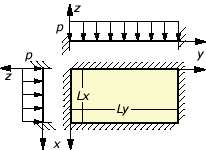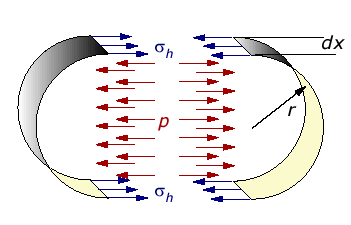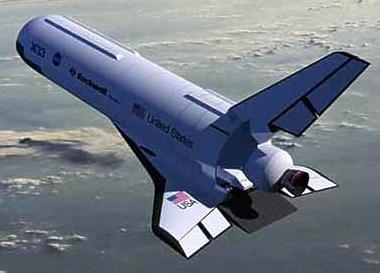The SpaceLaunchReport.com site operated by Ed Kyle provides the
specifications of some launch vehicles. Here's the page for the Falcon
1:
Space Launch Report: SpaceX Falcon Data Sheet.
http://www.spacelaunchreport.com/falcon.html
Quite interesting is that the total mass and dry mass values for the
Falcon 1 first stage with Merlin 1C engine give a mass ratio of about
20 to 1. This is notable because a 20 to 1 mass ratio is the value
usually given for a kerosene-fueled vehicle to be SSTO. However, this
is for the engine having high vacuum Isp ca. 350 s. The Merlin 1C with
a vacuum Isp of 304 s probably wouldn't work.
However, there are some high performance Russian kerosene engines that
could work. Some possibilities:
Engine Model: RD-120M.
http://www.astronautix.com/engines/rd120.htm#RD-120M
RD-0124.
http://www.astronautix.com/engines/rd0124.htm
Engine Model: RD-0234-HC.
http://www.astronautix.com/engines/rd0234.htm
However, I don't know if this third one was actually built, being a
modification of another engine that burned aerozine.
Some other possibilities can be found on the Astronautix site:
Lox/Kerosene.
http://www.astronautix.com/props/loxosene.htm
And on this list of Russian rocket engines:
Russian/Ukrainian space-rocket and missile liquid-propellant engines.
http://www.b14643.de/Spacerockets_1/Div ... ngines.htm
The problem is the engine has to have good Isp as well as a good T/W
ratio for this SSTO application. There are some engines listed that
even have a vacuum Isp above 360 s. However, these generally are the
small engines used for example as reaction control thrusters in orbit
and usually have poor T/W ratios.
For the required delta-V I'll use the fact that a dense propellant
vehicle may only require a delta-V of 8,900 m/s, compared to a
hydrogen-fueled vehicle which may require in the range of 9,100 to
9,200 m/s. The reason for this is explained here:
Hydrogen delta-V.
http://yarchive.net/space/rocket/fuels/ ... eltav.html
Then when you add on the fact that launching near the equator gives
you 462 m/s for free from the Earth's rotation, we can take the
required delta-V that has to be supplied by the kerosene-fueled
vehicle as 8,500 m/s.
I'll focus on the RD-0124 because of its high Isp, 359 s vacuum and
331 s sea level. On the "Russian/Ukrainian space-rocket and missile
liquid-propellant engines" page its sea level thrust is given as
253,200 N, 25,840 kgf. However, the Falcon 1 first stage weighs 28,553
kg. So we'll need two of them. Each weighs 480 kg, so two would be 960
kg. This is 300 kg more than the single Merlin 1C. So the dry mass of
the Falcon 1 first stage is raised to 1,751 kg. There is a RD-0124M
listed on the Astronautix page that only weighs 360 kg, but its sea
level Isp and thrust are not given, so we'll use the RD-0124 until
further info on the RD-0124M is available.
Taking the midpoint value of the Isp as 345 s we get a delta-V of
345*9.8ln(1 + 27102/1751) = 9,474 m/s (!) Note also the achieved delta-
V would actually be higher than this because the trajectory averaged
Isp is closer to the vacuum value since the rocket spends most of the
time at altitude.
This calculation did not include the nose cone fairing weight of 136
kg. However, the dry mass for the first stage probably includes the
interstage weight, which is not listed, since this remains behind with
the first stage when the second stage fires. Note then that the
interstage would be removed for the SSTO application. From looking at
the images of the Falcon 1, the size of the cylindrical interstage in
comparison to the conical nose cone fairing suggests the interstage
should weigh more. So I'll keep the dry mass as 1,751 kg.
Now considering that we only need 8,500 m/s delta-V we can add 636 kg
of payload. But this is even higher than the payload capacity of the
two stage Falcon 1!
We saw that the thrust value of the RD-0124 is not much smaller than
the gross weight of the Falcon 1 first stage. So we can get a vehicle
capable of being lifted by a single RD-0124 by reducing the propellant
somewhat, say by 25%. This reduces the dry weight now since one
RD-0124 weighs less than a Merlin 1C and the tank mass would also be
reduced 25%. Using an analogous calculation as before, the payload
capacity of this SSTO would be in the range of 500 kg.
We can perform a similar analysis on the Falcon 1e first stage that
uses the upgraded Merlin 1C+ engine. Assuming the T/W ratio of the
Merlin 1C+ is the same as that of the Merlin 1C, the mass of the two
of the RD-124's would now be only 100 kg more than the Merlin 1C+.
The dry mass and total mass numbers on the SpaceLaunchReport page for
the Falcon 1e are estimated. But accepting these values we would be
able to get a payload in the range of 1,800 kg. This is again higher
than the payload capacity of the original two stage Falcon 1e. In fact
it could place into orbit the 1-man Mercury capsule.
The launch cost of the Falcon 1, Falcon 1e is only about $8 million -
$9 million. So we could have the first stage for that amount or
perhaps less since we don't need the engines which make up the bulk of
the cost. How much could we buy the Russian engines for? This article
says the much higher thrust RD-180 cost $10 million:
From Russia, With 1 Million Pounds of Thrust.
Why the workhorse RD-180 may be the future of US rocketry.
Issue 9.12 | Dec 2001
"This engine cost $10 million and produces almost 1 million pounds of
thrust. You can't do that with an American-made engine."
http://www.wired.com/wired/archive/9.12/rd-180.html
This report gives the price of the also much higher thrust AJ26-60,
derived from the Russian NK-43, as $4 milliion:
A Study of Air Launch Methods for RLVs.
Marti Sarigul-Klijn, Ph.D. and Nesrin Sarigul-Klijn, Ph.D.
AIAA 2001-4619
"The main engine is currently proposed as the 3,260
lb. RP-LOX Aerojet AJ26-60, which is the former
Russian NK-43 engine. Thrust to weight of 122 to
1 compares to the Space Shuttle Main Engine’s
(SSME) 67 to 1 and specific impulse (Isp = 348.3
seconds vacuum) is 50 to 60 seconds better than
the Atlas II, Delta II, or Delta III RP-LOX engines.
A total of 831 engines have been tested for
194,000 seconds. These engines are available for
$4 million each, which is about 10% the cost of a
SSME."
http://mae.ucdavis.edu/faculty/sarigul/ ... 1-4619.pdf
Then the much lower thrust RD-0124 could quite likely be purchased
for less than $4 million. So the single RD-0124 powered SSTO could be
purchased for less than $12 million.
Even though the mathematics says it should be possible, and has been
for decades, it is still commonly believed that SSTO performance with
chemical propulsion is not possible even among experts in the space
industry:
Space Tourism is a Hoax
By Fredrick Engstrom and Heinz Pfeffer
11/16/09 09:02 AM ET
"In 1903, the Russian scientist Konstantin Tsiolkovsky established the
so-called rocket equation, which calculates the initial mass of a
rocket needed to put a certain payload into orbit, given that the
orbital speed is fixed at 28,000 kilometers per hour, and that the
maximum speed of the gas exhausted from the rocket that propels it
forward is also fixed.
"You quickly find that the structure and the tanks needed to contain
the fuel are so heavy that you will never be able to orbit a
significant payload with a single-stage rocket. Thus, it is necessary
to use several rocket stages that are dumped on the way up to get any
net mass, i.e. payload, into orbit.
"Let us look at the most successful rocket on the market — the
European Ariane 5. Its start weight is 750 tons, of which 650 tons are
fuel, 80 tons are structure and around 20 tons are left for low Earth
orbit payload.
"You can have a different number of stages, and you can look for minor
improvements, but you can never get around the fact that you need big
machines that are staged to reach orbital speed. Not much has happened
in propulsion in a fundamental sense since Wernher von Braun’s Saturn
rocket. And there is nothing on the horizon, if you discount
controlling gravity or some exotic technology like that. In any case,
it is not for tomorrow."
http://www.spacenews.com/commentaries/0 ... -hoax.html
The Cold Equations Of Spaceflight.
by Jeffrey F. Bell
Honolulu HI (SPX) Sep 09, 2005
"Why isn't Mike Griffin pulling out the blueprints for X-30/NASP, DC-X/
Delta Clipper, or X-33/VentureStar? Billions of dollars were spent on
these programs before they were cancelled. Why aren't we using all
that research to design a cheap, reusable, Single-Stage-To-Orbit
vehicle that operates just like an airplane and doesn't fall in the
ocean after one flight?"
"The answer to this question is: All of these vehicles were fantasy
projects. They violated basic laws of physics and engineering. They
were impossible with current technology, or any technology we can
afford to develop on the timescale and budgets available to NASA. They
were doomed attempts to avoid the Cold Equations of Spaceflight."
http://www.spacedaily.com/news/oped-05zy.html
Then it is important that such a SSTO vehicle be produced even if
first expendable to remove the psychological barrier that it can not
be done. Once it is seen that it can be done, and in fact how easily
and cheaply it can be done, then there it will be seen that in fact
the production of SSTO vehicles are really no more difficult than
those of multistage vehicles.
Then will be opened the floodgates to reusable SSTO vehicles, and low
cost passenger space access as commonplace as trans-oceanic air
travel.
Bob Clark









